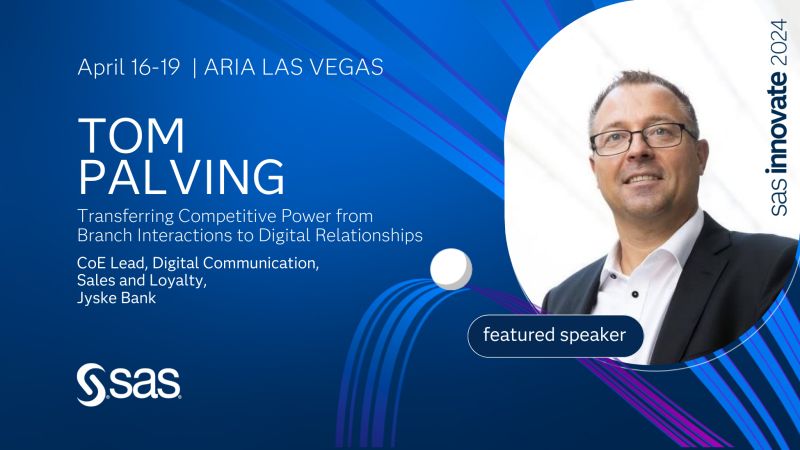Digital banking, big tech and data privacy are all contributing to a shift in the Scandinavian banking scene, according to Tom Palving, Center of Excellence Lead for Digital Communication and Sales Loyalty at Jyske Bank.
As a result, says Palving, traditional banks are facing a number of challenges, including:
- Customers are not as loyal as they used to be. It’s easier to switch banks and use different banks for different services, which affects loyalty.
- Fewer customers use advisory services and opt instead for online support, sometimes even for large investments and loans.
- While most customers in Denmark trust banks to take care of their money, they don’t have as much trust in banks taking care of their data.
- Big tech companies know more about customers than traditional banks and can use that to their advantage as they move into financial spaces.
Marketing to customers across platforms
As a traditional bank, Jyske has long focused on its strong brand and its trusted financial advisors. “We believe all relationships are built on trust. That is the most important currency we have,” says Palving. As more customers move online, however, focusing on the in-person relationship between advisors and customers alone is no longer enough to guarantee success.
“We needed to figure out a business model that is suited for a marketplace with lower loyalty and segmented income ratios in customers,” says Palving. “That’s the strategic reason we work with SAS.”
In particular, Jyske chose SAS Customer Intelligence 360 to modernize its approach to marketing to banking customers. “Using SAS CI360 we can track customers in digital marketing and physical marketing touchpoints. We can recognize the customer and create marketing messages for customers on both platforms.”
Speaking at SAS Innovate in Las Vegas, Palving shared the bank’s 10 commandments for building digital relationships:
- Focus on simplicity in solving problems.
- Use personification to understand customers.
- Be trustworthy with money and data.
- Use customer data intelligently.
- Motivate customers toward frequent use of banking resources.
- Offer strong online services that nobody else has.
- Connect through social networks on the banking platform.
- Reward loyal customers with status.
- Provide easy and safe access to consultants.
- Use behavior and transaction data intelligently.
“We are using a lot of resources to get value out of data and to keep it safe,” says Palving.

Improving purchase propensity rates
To illustrate the success, he shared two specific examples. The first example examines customers applying for car loans online. In this scenario, the average loan completion rate before target marketing was .5%. After exploring the data, the bank realized that customers who spend more than 60 seconds on the loan completion page have different purchase propensity rates. Using this data point and others to target customers, the bank saw its completion in the targeted group go up to 13%.
In a second example, Palving says the bank offered an easy investment option in its mobile app. The baseline purchase propensity rate for this service was .4%, but that rate went up to 9.1% if the user spent more than 120 seconds on a relevant product page. In this case, the bank realized buying rates were not increased based on the time-on-page at the point of purchase. Rather, the time on page before the purchase was a bigger factor.
“We’ve done this a couple hundred times and now know how user journeys work,” says Palving.
“One of the reasons we chose SAS as a marketing platform is that it is comprehensive and we can work with the platform for many years and still grow with it. We’ve worked with SAS CI360 for two years, and there are still a lot of things we can do better.”


